MAVCOR Journal is an open access born-digital, double blind peer-reviewed journal dedicated to promoting conversation about material and visual cultures of religion. Published by the Center for the Study of Material and Visual Cultures of Religion at Yale University and reviewed by members of our distinguished Editorial Board and other experts, MAVCOR Journal encourages contributors to think deeply about the objects, performances, sounds, and digital experiences that have framed and continue to frame human engagement with religion broadly understood across diverse cultures, regions, traditions, and historical periods.
A special issue guest edited by Laura Levitt and Oren Stier (coming soon! Below is a preview only and not yet accessible to the public)
 Hedda Sterne’s Photomontages: Passport to Life
Hedda Sterne’s Photomontages: Passport to Life
This essay examines Hedda Sterne's 1941 Romanian passport and her little-known photomontages from Life magazine as parallel "documents of exile." The passport traces her perilous flight from Europe, serving as an unintended autobiography of survival. Her photomontages, composed from magazine clippings, became a visual testimony that confronts the dissonance between American popular culture and her refugee anxiety. The study uses a conservation and art history lens to explore how paper, in both bureaucratic and artistic forms, mediated Sterne's identity and experience of displacement.
What is evoked when one encounters a child’s nametag, exhumed from the soil of a former Nazi death camp? For Holocaust archaeologists, such moments collapse temporal distance, raising pressing affective and ethical questions about the persistence of the past within the material present. The question of ownership also reveals tensions between private remembrance and public commemoration, illuminating the contested values ascribed to such objects in the context of Holocaust heritage. When such objects enter museum narratives, they bring the emotional labor and spiritual attachments of families with them, complicating what Leora Auslander and Tara Zahra describe as the “afterlives” of things displaced by war.
 Examining Body Proximity and “Sacredness” at/in Relation to Treblinka Extermination Camp
Examining Body Proximity and “Sacredness” at/in Relation to Treblinka Extermination Camp
During a visit to the Shapell Center in 2018, the author was shown a crumpled photograph which had been clandestinely hidden in the mouth of its owner Margret Hantman when she was forced to hand over her belongings upon arrival in Auschwitz. The unique materiality of this item clearly altered (and seemingly elevated) the status of this photograph within the archive, predominantly from the fact that it had been in extremely close contact with the human body. The author examines the broad definition of sacrality in the context of the Holocaust and its aftermath, through an analysis of four such objects.
 On the Multiple Lives of Bannerstones: Indigenous North America 6,000 BCE to the Present
On the Multiple Lives of Bannerstones: Indigenous North America 6,000 BCE to the Present
Looking at Indigenous bannerstones from what is known as North America, their unique shapes and symmetrically drilled holes carved from an array of lithics, from sedimentary stone to quartz, I wonder what stories they are telling. Do their stories begin with the sculptors who made them east of the Mississippi Valley in 6,000 BCE or do they begin four billion years ago when volcanic heat from the earth’s core melted and congealed minerals to form the oldest terrestrial rocks?
Beijing's Tibetan Buddhist temples have always been places through which diverse groups of people moved. During the Qing, these were spaces where elites from different backgrounds met, collaborated, and enacted the multicultural character of the empire within the capital. The temples themselves announced the pluralistic nature of the Qing dynasty, as well as its grandeur, through their public display of signs and stelae aimed at the multi-ethnic audiences of the empire.
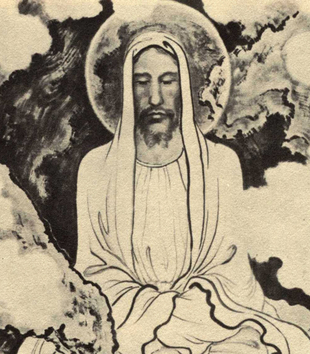 In Search of Multiple Colors of Christ: Daniel J. Fleming and the American Protestant Encounter with Asian Christian Visual Arts, 1937-1940
In Search of Multiple Colors of Christ: Daniel J. Fleming and the American Protestant Encounter with Asian Christian Visual Arts, 1937-1940
Fleming’s trilogy illustrates the complex dynamics of race, religion, and visual arts in the interwar United States. Though the extant scholarship highlights the increasing Anglo-Saxonization of Jesus’s body in American visual culture in this era, Fleming’s story reveals a virtually opposite impulse in liberal Protestantism: to search for multiple colors of Christ.
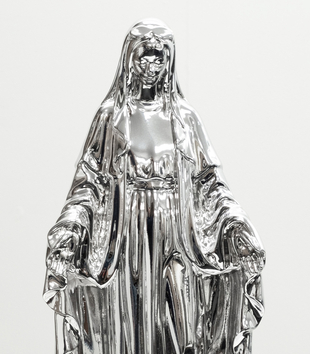 Like a Virgin? Breaking, (un)making, and replicating the Madonna across time, space, and toy stores
Like a Virgin? Breaking, (un)making, and replicating the Madonna across time, space, and toy stores
The authors set the nucleating body of the medieval Virgin in conversation with contemporary reimaginings of the Madonna to ask how hybridization, fracture, insertion, assemblage, color, multiplicity, and meaning around sacred and secular exchange can change the way we know and see in relation to these forms from the medieval to the postmodern.
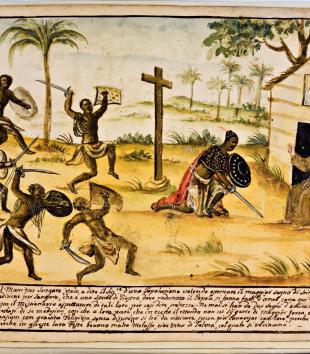 Resoundings of Early Modern Afro-Catholic Festive Culture
Resoundings of Early Modern Afro-Catholic Festive Culture
This Constellation is intended to complement the author's book and give readers access to color versions of some of its illustrations, which could only be printed in black and white in the original publication. As in other parts of the Iberian world (i.e., the Iberian Peninsula and all the territories under Spanish and Portuguese control), these performances were usually staged by lay Catholic confraternities.
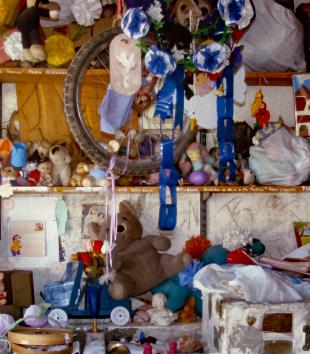 Petitionary Devotion: Folk Saints and Miraculous Images in Spanish America
Petitionary Devotion: Folk Saints and Miraculous Images in Spanish America
Votive practice in the Americas has Indigenous, Christian, and syncretic origins that contribute to the diversity of offerings, as do social class, gender, age, and region. Petitionary devotion is structured by an exchange that the votary proposes to a folk saint or miraculous image. The offerings that votaries promise are based on the presumption that folk saints and miraculous images, because they are like us, value what we value.
A special issue curated by Kati Curts and Alex Kaloyanides
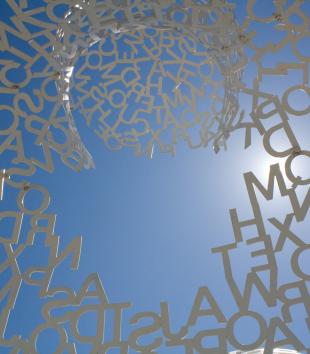 Characterizing Material Economies of Religion in the Americas: An Introduction
Characterizing Material Economies of Religion in the Americas: An Introduction
Kati Curts and Alex Kaloyanides introduce this special issue of MAVCOR Journal devoted to examining four key categories: “Material,” “Economies,” “Religion,” and “America(s).” The ambition of this issue is that the collective inquiries of its authors, which span various interpretive histories and genealogical fragments, can offer ways to better understand their assorted conveyances, as well as the powerful grip of their critical conjunction.
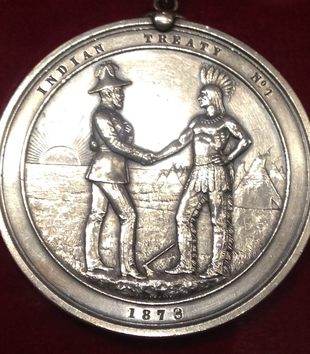 Medals, Memory, and Findspots
Medals, Memory, and Findspots
For many Indigenous people of Turtle Island, also known as North America, treaty medals are material reminders of sacred promises made between their nations and the British Crown or the U.S. Government. Settlers and colonial officials, by contrast, have often treated these medals as mere trinkets.
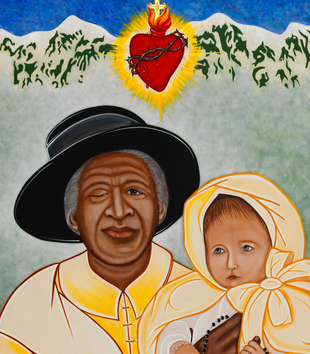 Julia Greeley, Denver’s Angel of Charity
Julia Greeley, Denver’s Angel of Charity
More than a portrait of a holy person, an icon structures a present encounter with a saint and the community that the saint represents. What kind of encounter does Greeley’s icon conjure with race and Catholicism in the Old West?
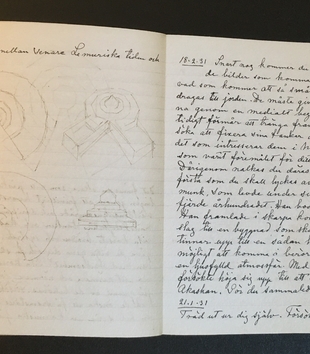 Hilma af Klint's Temple for the Paintings
Hilma af Klint's Temple for the Paintings
Through Af Klint’s journal entries and sketches, we can shift analyses of sacred space from the guise of transcendent force that simply “appears,” in the phenomenological nomenclature, and instead approach it as technique.
 Tree Rings and Blood Lines
Tree Rings and Blood Lines
These redwood rings are both family trees and family circles, literally naturalizing a canonical “American” familial heritage insistently recited and instantiated in many media and locations: artistic and built environments, judicial practice, legislation and policy, textbooks, land use, and national land theory. Heritage is a family business.
 Corporealizing Moroccan Place
Corporealizing Moroccan Place
I wondered—how does a person become a place? A street, city quarter, mosque, or town could take the name of the wali interred there, like the cities of Sidi Slimane and Mawlay Idris. The sacred enters physical space through the body.
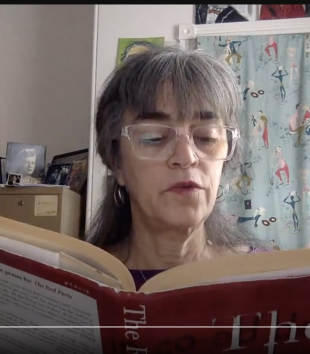 A Photograph in Words
A Photograph in Words
In her memoir, The Red Parts, Maggie Nelson writes about the over-thirty-year-old unsolved murder of her aunt, Jane Mixer, a case brought back to life in a Michigan court room. Who gets to tell this story? How should it be told?
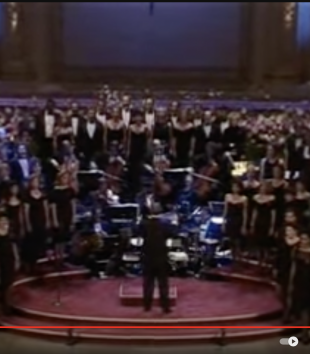 Pausing on a Sunday: What Kind of Secular is the American Musical?
Pausing on a Sunday: What Kind of Secular is the American Musical?
The musical in which this song appears includes archetypal depictions of the modern artist and his attendant gendered capacities and failures. Sondheim would point out: its lyric is a single sentence; it is a description of a process; it includes a word, “forever,” that he observes makes him cry.
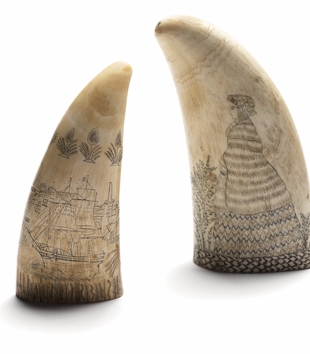 Sperm Whale Teeth in Circulation: A Case Study in Material Economics
Sperm Whale Teeth in Circulation: A Case Study in Material Economics
From Fijian ceremonial objects to nineteenth-century American whaling souvenirs, to airline membership cards, this constellation explores material economies through one raw material: sperm whale teeth.
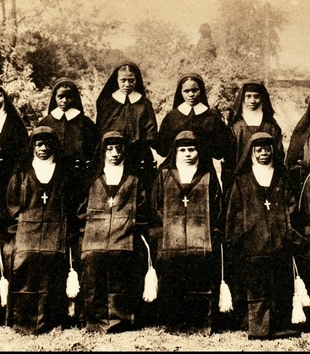 “Colored Magdalens,” House of the Good Shepherd for Colored Girls, Baltimore, ca. 1930s
“Colored Magdalens,” House of the Good Shepherd for Colored Girls, Baltimore, ca. 1930s
Was [the Magdalens'] decision to own in perpetuity the status of penitent a judgment on waywardness, or a benediction? An internalization of white surveillance, or its repudiation?
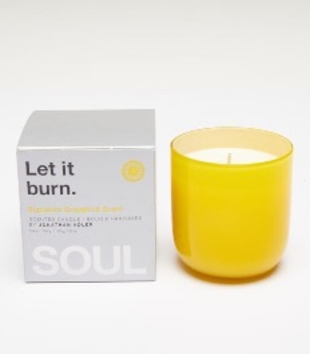 Let. It. Burn. SoulCycle's Jonathan Adler Grapefruit Scented Candle
Let. It. Burn. SoulCycle's Jonathan Adler Grapefruit Scented Candle
While a stationary bike is the main conduit for the SoulCycle experience, perhaps no object plays a greater role in facilitating SoulCycle’s choreography of emotion than the brand’s signature grapefruit-scented candle.
 The Sticky Cookies of Biblical Womanhood
The Sticky Cookies of Biblical Womanhood
Biblical womanhood blogs often resemble the idealized Christian home they encourage women to build. Businesses have long recognized the potential for profit in networked domesticity, enticing bloggers to participate in commercial enterprise by promising percentages of purchase costs made through their sites.
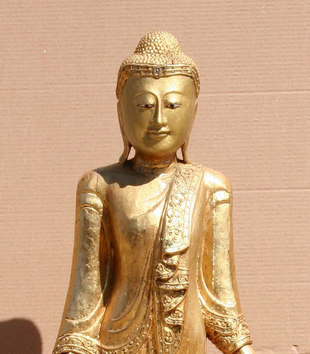 eBay Buddha
eBay Buddha
This golden Buddha, which has a striking resemblance to a Burmese Buddha in the British Museum, came up for sale on eBay for the sum of $5,000.00. The material of teak, the economies of the British and Burmese empires, the religion then being named "Buddhism," now give us this American eBay Buddha.
 Wifey
Wifey
The fragrance Wifey by KKW Fragrances was released in 2019. As wife to black artist Ye (formerly Kanye West), Kim KW claimed and sold the role of wifey. The “wifey” is not simply a wife. She is a model or caricature of a wife, a down-ass. The “wifey” signifies a new ideal in our contemporary popular culture.
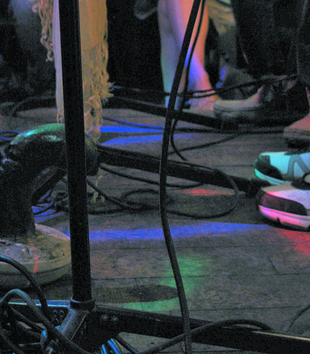 Making Paths with Stone
Making Paths with Stone
Eshu-Elegguá is a divinity in the Regla de Ocha-Ifá pantheon characterized as a warrior and messenger. Enslaved Africans in Cuba taught their descendants that a good relationship with this divinity is helpful for making risky choices and providing protection when embarking on a treacherous new beginning.
 Fuel for the Soul
Fuel for the Soul
The bible "God's Word for the Oil Patch: Fuel for the Soul" offers insight into how people theorise both the value of energy and the kind of lives people need to live to access this value. The publication implies that to have the kind of soul that lives a good life, you need to manage oil and its energy: souls are things that need fuel, be it "God's word" or oil itself. Oil work, in this context, becomes soul work.
 Bus Station Clocks
Bus Station Clocks
A row of clocks. Each one with an identical, nondescript face—except for the hands, which are conspicuous in their different orientations. Clocks are the kind of “religion” that spills out beyond the sphere of the sacred. Rows of clocks that evoke utopian, aspirational feelings of global connectedness. These are “religious” feelings in the deepest sense of the term.
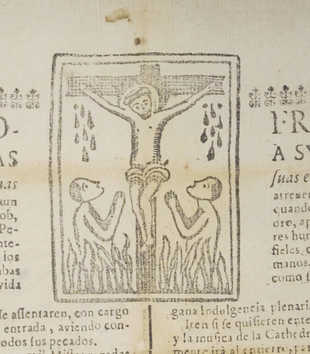 Confraternal Letter
Confraternal Letter
A simple woodcut on a late-seventeenth-century membership letter of the confraternity of Souls of the Cathedral of Lima depicts two souls bathed in flames, gazing up at Christ crucified. Stylized drops of blood pour from each of Christ’s wounded hands, visual embodiments of the doctrinal logic behind indulgences—the great sacrifice of Christ and of the martyrs of the church created a treasury of merit that ordinary sinners could draw upon.
 Wudhu Socks
Wudhu Socks
This is a pair of highly engineered, durable waterproof socks that exemplifies the rebranding of sportswear for the American Muslim market. Marketed as “wudhu socks,” the socks protect the feet and ankles from ritual impurities, and are intended to allow one not to wash one’s feet between ablutions.
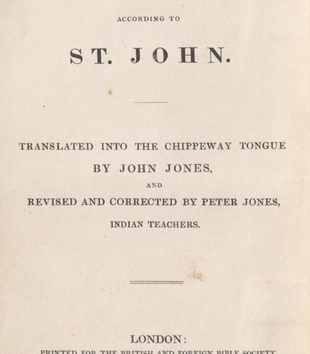 Biblical Gifts & Colonial Relations
Biblical Gifts & Colonial Relations
On April 5, 1832, Peter Jones presented King William IV with a bible he translated into Anishinaabemowin. This exchange reflects Anishinaabe gift-giving practices, in which bible gifts can be regarded as practices used to build and refuse particular religious, political, and material relations.
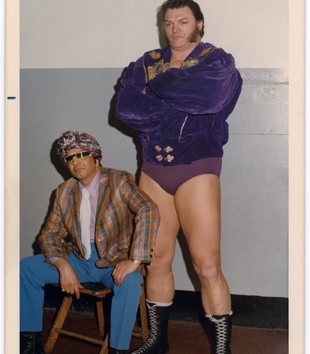 The Mormon Heel
The Mormon Heel
Don Leo Jonathan was born 1931 to a Mormon family in Utah. During his professional wrestling career, Don Leo capitalized on certain anti-Mormon prejudices during a period of Mormonism’s erstwhile mainstreaming and clean-cut imagination in American culture, often performing as the "heel," or villain.
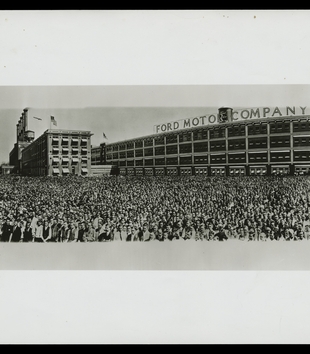 Relics and Rubber
Relics and Rubber
In 1929, Henry Ford opened the Henry Ford Museum. That same year Ford Motor Company set ablaze vast swaths of rainforest in Brazil to clear land for Fordlandia, one of Ford’s rubber plantations. In Ford’s “progressive” trail across the Americas and in pictured masses arrayed outside Ford’s plants, we glimpse material economies of religion christened as political economy and mass produced in Ford’s name.
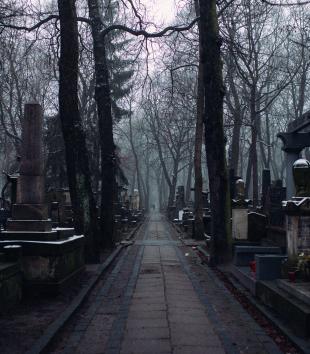 Material Economies of Life-Time: Grief, Injury, Expiation, Desire
Material Economies of Life-Time: Grief, Injury, Expiation, Desire
Tracy Fessenden, Hillary Kaell, and Alexia Williams discuss three iterations of religious, material economies: bus stop clocks, cloistered Magdalens, and a Catholic prayer card from Denver.
 The Intimate Ironies of the Wifey: Material Religion and the Body
The Intimate Ironies of the Wifey: Material Religion and the Body
From the familiarity of scent to the spread of colonial/space time, and through Black vernacular culture and “linking” us to divine power through the digital, Ellen Amster, Dusty Gavin, and Suzanne van Geuns introduce us to the strange intimacies of the wifey.
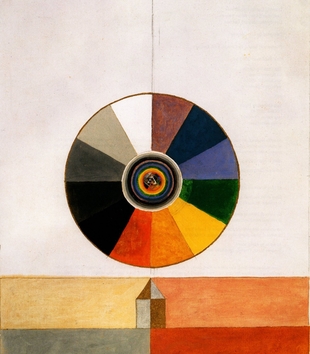 Designing Risk, Accumulating Failure: Purgatory, the Planned, and Primitive Accumulation
Designing Risk, Accumulating Failure: Purgatory, the Planned, and Primitive Accumulation
In Fall 2020, Paul Johnson, Emily Floyd, and Kati Curts met on Zoom. In this edit of their extended conversation, the authors question “planned sacred space,” the role of design in creating religious experience, and the category of the “relic.”
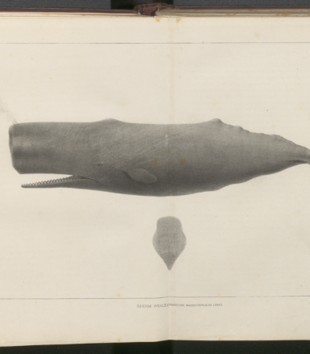 The Old Gods: Whales, Oil, and Teak
The Old Gods: Whales, Oil, and Teak
Judith Ellen Brunton, Richard Callahan, and Alexandra Kaloyanides endeavor to find the resonances their images pose to characterizing material economies of religion in the Americas. In emails from the autumn of 2020, each offers moments of speculation on the contexts shaping their research objects, and the supernatural powers and economies they enchant.
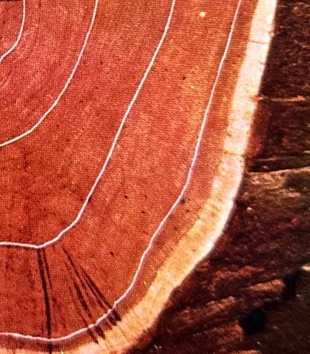 American Performances, Economies, and Genealogies of Constraint
American Performances, Economies, and Genealogies of Constraint
In this collaboratively written exercise, the authors discuss the material significance of embodied sense perceptions and affects. Despite Protestant secularity’s claims to the contrary, sensation and affect are no more confined to interiorized subjective mental states than is religion merely belief.
 The Currency of Religion in America in Three Acts: Market Logics, Emissaries of Kinship, and Technologies of Feeling
The Currency of Religion in America in Three Acts: Market Logics, Emissaries of Kinship, and Technologies of Feeling
Cody Musselman, Kambiz GhaneaBassiri, and Roxanne Korpan each present an object for consideration. Together they think about what it means for each object to be involved in the material economy of religion. Their conversation traverses various geographies and traditions, and ponders how material objects can be carriers of religion.
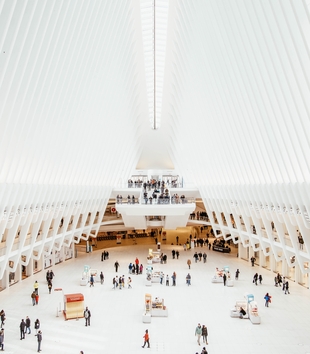 A Closing Conversation
A Closing Conversation
If the Marxian dialectic culminates with the mystification of the commodity, these essays seem to envision a sacralization and re-sacralization of the profane, such that matter is the accumulation of sacred value. Transcendence and enchantment in this account are very much “real” and just as ontologically entrenched as capitalism.
A special issue guest edited by Kambiz GhaneaBassiri and Anna Bigelow.
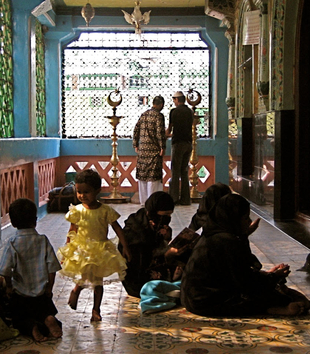 Introduction to the Special Issue: Material Islam
Introduction to the Special Issue: Material Islam
Anna Bigelow and Kambiz GhaneaBassiri introduce this special issue of MAVCOR Journal devoted to Material Islam. It explores devotional objects, the Islamic sensorium, the book as a material object, the Muslim body, and the various roles of the mosque as a social, political, and spiritual space. Taken together, its varied essays demonstrate an incredibly wide-ranging, rich, and exciting arena of study.
 In Conversation with Christiane Gruber on Material Islamic Studies
In Conversation with Christiane Gruber on Material Islamic Studies
Kambiz GhaneaBassiri and Anna Bigelow speak with Christiane Gruber about changes and growth in field of Material Islam, new arenas of inquiry, and their hopes for further interdisciplinary scholarship.
 Ablution Socks: The Logic of Market Capitalism and Its Limits
Ablution Socks: The Logic of Market Capitalism and Its Limits
The marketing of “wudhu socks" provides an interesting window onto how the forces of consumer capitalism in twenty-first-century America are brought to bear on a centuries-old hermeneutical, legal, and theological tradition in Islam that has long conceptualized purity through embodiment and objects.
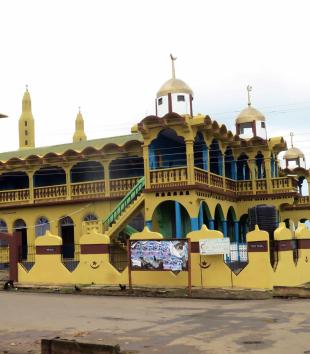 The Transcontinental Genealogy of the Afro-Brazilian Mosque
The Transcontinental Genealogy of the Afro-Brazilian Mosque
This article examines the genealogy of Afro-Brazilian mosques, answering some of the most immediate and puzzling questions that they force all who see them to ask. The answers to these questions demonstrate the fluidity of categories such as European, African, Islamic, and Christian, and how West African Muslims effectively drew on an architectural vocabulary with connections to three continents to forge an emergent cosmopolitan identity.
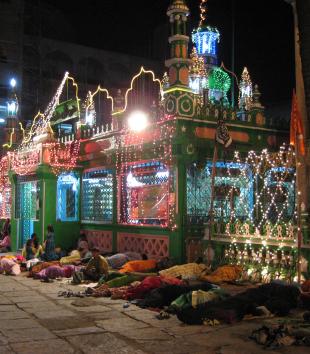 Senses of Belonging: Materiality, Embodiment, and Attunement at Sufi Shrines in India
In exploring the multiple modalities of Muslim belonging and unbelonging in India, the arenas in which Muslims and non-Muslims interact, especially at shared holy places, are extremely illuminating locales. This essay explores the ways in which material and somatic forms of interreligious encounter at a Sufi dargah (درگاہ), or tomb shrine, in Bengalaru (Bangalore) exemplify everyday as well as spectacular practices of shared piety that also reimagine the possibility of collective belonging in a time of precarity.
Senses of Belonging: Materiality, Embodiment, and Attunement at Sufi Shrines in India
In exploring the multiple modalities of Muslim belonging and unbelonging in India, the arenas in which Muslims and non-Muslims interact, especially at shared holy places, are extremely illuminating locales. This essay explores the ways in which material and somatic forms of interreligious encounter at a Sufi dargah (درگاہ), or tomb shrine, in Bengalaru (Bangalore) exemplify everyday as well as spectacular practices of shared piety that also reimagine the possibility of collective belonging in a time of precarity.
 Bībī kā ʿAlam
Bībī kā ʿAlam
The Bībī kā ʿalam, as it is popularly known, occupies a special, sacred class of ʿalams for the Hyderabadi Shiʿa. Containing Fatimah’s funerary plank, is a reliquary ʿalam and, while Hyderabad is distinctive for the extraordinary number of relics it possesses that are associated with the Imams and Ahl-e Bait, very few connect to Shiʿi women saints.
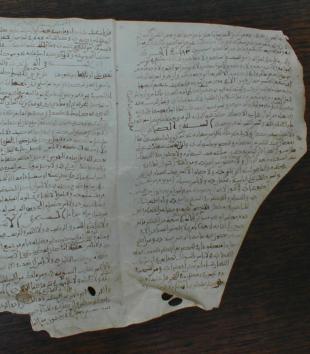 A tenth-century Islamic manuscript from Kairouan, Tunisia
A tenth-century Islamic manuscript from Kairouan, Tunisia
A parchment bifolio from the Kairouan collection presents a mystery. But like pottery in an archeological dig, this fragment is in situ, and clues to the identity of the author, the text, and the community of scholars that wrote and preserved it, are found in the rich context of this unique collection. Together, these manuscripts bear witness to a fascinating history of literary and cultural production, not only in North Africa, but in the broader Islamic world of the ninth and tenth century.
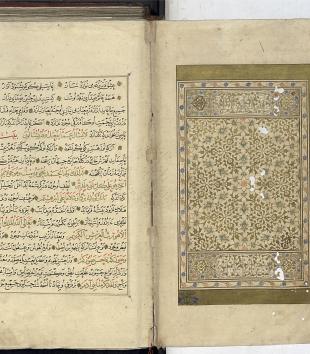 Adorning the King of Islam: Weaving and Unraveling History in Astarabadi’s Feasting and Fighting
Adorning the King of Islam: Weaving and Unraveling History in Astarabadi’s Feasting and Fighting
This article traces a fourteenth-century Persian history from Anatolia, Bazm wa Razm (Feasting and Fighting), written by ʿAzīz al-Dīn Astarābādī, from its presentation copy to its various recensions down to the modern period, examining how each era visually refigures this textual manifestation of its original patron, Burhān al-Dīn Aḥmad (r. 783-800 AH/1381-1398 CE), for a new purpose.
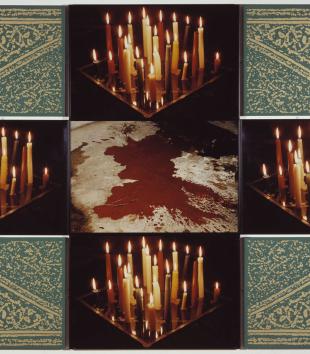 Rasheed Araeen’s Bismullah
Rasheed Araeen’s Bismullah
Rasheed Araeen’s Bismullah is noteworthy as the first work by the Karachi-born, London-based artist to enter the collection of Britain’s Tate Gallery in 1995. Bismullah deploys strategies of juxtaposition, disjunction, and doubling to combine visual imagery that references religion, empire, art history, and the artist’s personal biography. Through its montage tactics Bismullah not only maps the binaries of self and other that structure colonial discourse within and beyond the artistic field, but also recontextualizes these signifiers.
 Hikmet Barutçugil's Hüdayi Yolu
Hikmet Barutçugil's Hüdayi Yolu
Hüdayi Yolu represents a modern artist’s loving depiction of his hometown and neighborhood, an homage to a local Sufi saint, the romanticized communal memory of Istanbul as an Ottoman metropolis, and Barutçugil’s approach to “Sufi” art.
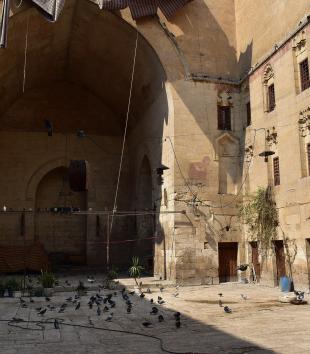 On the Material and Social Conditions of Khalwa in Medieval Sufism
On the Material and Social Conditions of Khalwa in Medieval Sufism
Ubiquitous across the medieval Islamic world, khalwa is the practice of self-isolation, typically in a small cell, in order to focus on pious devotions. This article offers one possible approach to theorizing the heterogenous elements of khalwa coherently by insisting that we take the material and the social as seriously as we do the human and the spiritual.
 Ayat Al Kursi Round
Ayat Al Kursi Round
Crowned by the word “Allah,” a dense piece of Arabic calligraphy carved out of stainless steel wraps around an embellished center. The text is the ayat al-kursī, or “The Throne Verse,” a portion of the Qur’an (2:256) often recited before sleep or travel because of its reputation for spiritual and physical protection. While the Illinois-based company Modern Wall Art produces the above “Ayat Al Kursi Round,” at least six other businesses manufacture their own ayat al-kursī pieces in the same circular visual style. These pieces of Islamic decor appeal to different tastes in spite of the repetitiveness of their visual content. By attending to the specific production method and branding of “Ayat Al Kursi Round,” we can identify how the materialization of God’s words in wall art entangles Islamic ethics and the aesthetics of class formation.
 Depicting Kongo and Angola in the Seventeenth and Eighteenth Centuries
Depicting Kongo and Angola in the Seventeenth and Eighteenth Centuries
As part of their activities in Kongo and Angola Capuchin Franciscan friars created dozens of images and wrote hundreds of pages of text in works that they called "practical guides." These Capuchin didactic images form an exceptionally important corpus that enriches our knowledge of central Africa and dramatically multiplies the European-format visual record about the African continent before 1800.
 Nature, Culture, and Faith in Seventeenth-Century Kongo and Angola
Nature, Culture, and Faith in Seventeenth-Century Kongo and Angola
Early modern central Africa comes to life in the images that Capuchin friars. This Capuchin central African corpus consists today in four extant manuscripts connected by form and content. This essay offers additional visual material from the corpus by featuring details of each individual vignette that comprise the 1650s poster now in the Museo Francescano, as well as the unpublished versos of the Parma Watercolors that feature text.
 The Black Cross
The Black Cross
Donald Jackson’s The Black Cross illustrates some of the ways contemporary calligraphic art engages sacred writ: through the interplay of word and image, recording the artist’s physical gestures, and making visible the divine.
 Models of a Bygone World: Popular Nineteenth-Century Nativity Scenes as a Representation of Chilean Society
Models of a Bygone World: Popular Nineteenth-Century Nativity Scenes as a Representation of Chilean Society
Embracing the belief that the humblest of individuals participated in Jesus’s birth with their presence and their gifts alongside the wisest, Christians of every era have wished to display their own participation and contribution to this foundational Christian event. This article describes the ways in which a traditional, rural-inspired society like that of Santiago, Chile at the end of the nineteenth and the beginning of the twentieth centuries expressed itself through its nativity scenes.
Guest edited by Amy Holmes-Tagchungdarpa and Kalzang Dorjee Bhutia in collaboration with MAVCOR Journal Editor Emily C. Floyd. The call for papers for this special issue invited scholars coming from diverse disciplines (religious studies, anthropology, archaeology, history of art, visual studies, etc) and working across a range of high altitude ecologies, from the Andes to the Himalayas and beyond, to consider how the specificities of these regions impact material and visual aspects of religious practice. This special issue is published on a rolling basis.
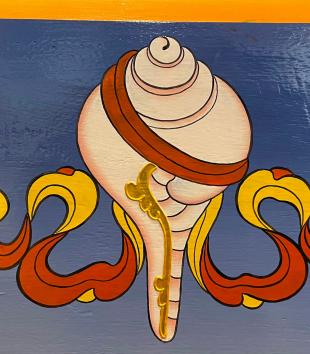 Flying Conches in the High-Altitude Oceans of the Himalayas: Displaced Objects and Multiscalar Relations in the Mountains of Sikkim
Flying Conches in the High-Altitude Oceans of the Himalayas: Displaced Objects and Multiscalar Relations in the Mountains of Sikkim
Conch shells frequently appear as objects in religiously inspired artwork and shrines in Sikkim, west India. Their frequent appearance in material culture and invocation in Classical Tibetan-language literary culture is indicative of a rich repository of connections. This essay explores some of their many resonances, in particular their significance as indicators of ecological change in the Himalayas.
 The Ritual Ascent at Mount Tlaloc, Mexico
The Ritual Ascent at Mount Tlaloc, Mexico
Bridging ecology, ethnohistory, linguistics, and art historical inquiry, this article argues that the various forms of vegetation encountered along the slope of Mount Tlaloc during the ascension of the tlahtoque were of ritual significance within Nahua worldview.
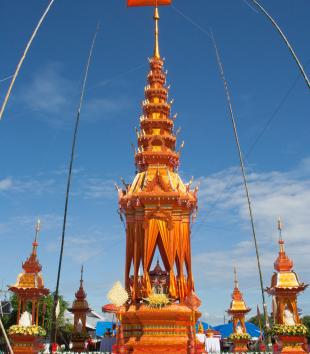 Gold Palaces: Merit, Beauty, and Perfection in the Cremation Structures of Monks in Northern Thailand
Gold Palaces: Merit, Beauty, and Perfection in the Cremation Structures of Monks in Northern Thailand
Cremation structures serve the utilitarian purpose of incinerating a corpse to aid transition from life to death, but in contemporary practice in Northern Thailand, opulent, golden-colored cremation structures called prasat sop also create a stunning sight that give local viewers a deeper understanding of all sentient beings’ connection to death.
 Qoyllur rit’i: El señor de la Estrella de Nieve
Qoyllur rit’i: El señor de la Estrella de Nieve
En 2012 empecé a hacer un registro gráfico del peregrinaje que poco a poco se convirtió en un proyecto fotográfico. Al intentar comprender este mundo sincrético, la fotografía me permitió plasmar y narrar lo que veía.
 Qoyllur rit’i: The Lord of the Snow Star
Qoyllur rit’i: The Lord of the Snow Star
In 2012, I began to make a graphic record of the pilgrimage, which little by little evolved into a photographic project. In attempting to comprehend the syncretic world of the festival, photography allowed me to capture and narrate what I saw.
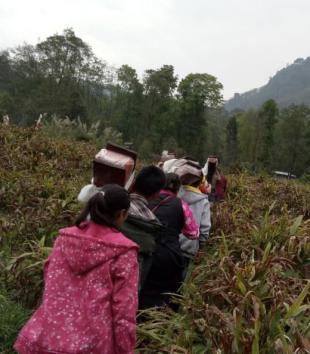 The Book as a Generative Agent: The Buddhist Canon as a Community Member in Book Procession Rituals of the Himalayas
The Book as a Generative Agent: The Buddhist Canon as a Community Member in Book Procession Rituals of the Himalayas
Known as the Bumkor, the books that make up the Bum are not just objects, but are generative, active agents that are capable of producing and renewing auspiciousness in the local human and nonhuman community that reside in the landscape.
 Purifying Multispecies Relations in the Valley of Abundance: The Riwo Sangchö Ritual as Environmental History and Ethics in Sikkim
Purifying Multispecies Relations in the Valley of Abundance: The Riwo Sangchö Ritual as Environmental History and Ethics in Sikkim
The Riwo Sangchö is a ritual exchange that facilitates smoky relations between humans and spirits resident in landscapes around the world.
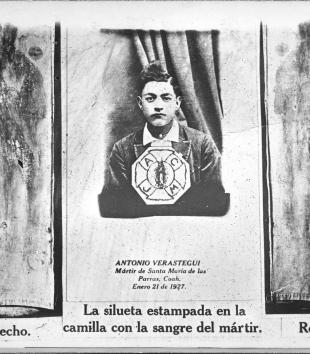 Photographic Postcard Commemorating Antonio Verástegui
Photographic Postcard Commemorating Antonio Verástegui
A postcard commemorating a young “martyr” of Mexico’s Cristero War named Antonio Verástegu engages the spectator in an act of witnessing that entails both religious and political consequences.
 Colonial Materiality: Silver’s Alchemy of Trauma and Salvation
Colonial Materiality: Silver’s Alchemy of Trauma and Salvation
Embedded in power relations, coloniality, and matters of purification, early modern silver was a particularly generative site. Might its peculiar paradoxes be usefully thought in terms of a materiality of trauma?
 Material Technologies of Empire: The Tobacco Pipe in Early Modern Landscapes of Exchange in the Atlantic World
Material Technologies of Empire: The Tobacco Pipe in Early Modern Landscapes of Exchange in the Atlantic World
The look and shape, feel and function of the tobacco pipe footnote the transformational features of the early modern Atlantic world: landscapes of exchange.